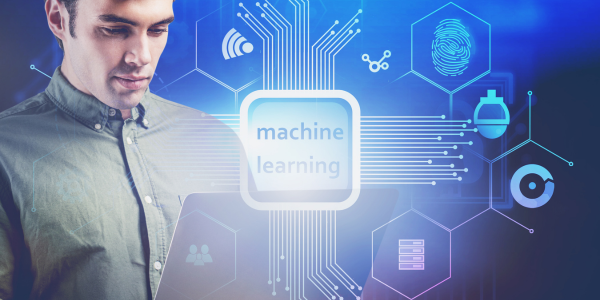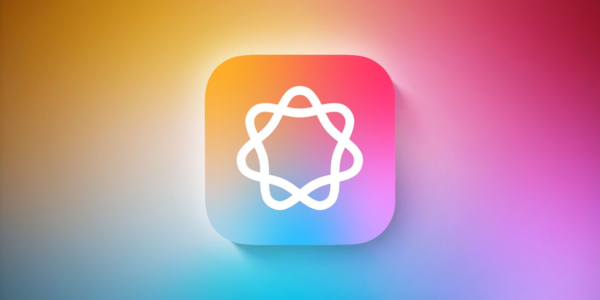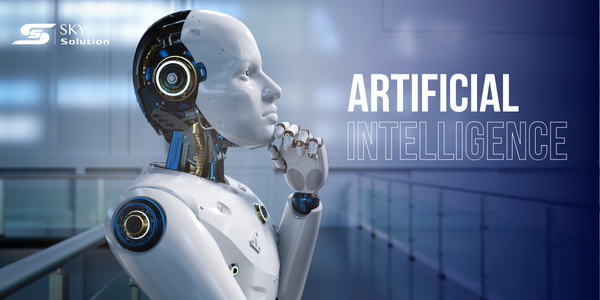Artificial intelligence has become a major trend in the tech industry, and “AI is confusing,” with seemingly every company highlighting its advancements in AI usage or development. However, the field is full of complex terms, making it hard to understand what’s really happening. To make things clearer, we’ve created a list of common AI words and will explain what they mean and why they matter.
In this article, News Sky Solution will provide you with more information about artificial intelligence, what it actually does, and the numerous types of it.
I. What is Artificial Intelligence (AI)?
Artificial intelligence, or AI, refers to software that enables computers to carry out complex tasks, such as recognizing speech, making decisions, and detecting patterns.
AI has the ability to profoundly influence the world. It could assist in diagnosing medical conditions, manage self-driving cars, and enhance human intelligence. On the other hand, some believe it could result in a robot-driven catastrophe and the collapse of humanity. Opinions are based on who you ask.

II. AI terms you should know
There are numerous terms about AI, so to help you better understand them, I’ve collected and synthesized an overview of several key terms in artificial intelligence that are currently being frequently discussed.
- Machine learning (ML)
Machine learning (ML) is a segment of AI focusing on using data and algorithms to enable AI to replicate human learning processes, gradually enhancing its accuracy.

- Artificial general intelligence (AGI)
Artificial general intelligence (AGI) concentrates on developing AI that can achieve human-level cognitive capabilities, including the ability to self-teach.
- Generative AI
Generative AI or generative artificial intelligence refers to the use of AI to create new text, images, code, and more. Generative AI tools are powered by foundation models (large AI) models that are typically trained on vast amounts of data,
- Hallucinations
AI hallucination is a phenomenon that refers to inaccurate or misleading information produced by generative AI models.
These mistakes may arise from several factors, such as inadequate training data, incorrect assumptions made by the model, or biases present in the data used for training.
- Natural language processing (NLP):
Machines can comprehend human language through machine learning techniques. A straightforward example of this is OpenAI’s ChatGPT, which can interpret text queries and generate corresponding text. Another advanced tool for natural language processing (NLP) is OpenAI’s Whisper speech recognition technology. According to reports, this technology was utilized to transcribe audio from over 1 million hours of YouTube videos, aiding in the training of GPT-4.
- Inference:
When a generative AI application produces something, such as ChatGPT providing a recipe for chocolate chip cookies in response to a request, it performs a specific task. This is similar to what your computer does when you run local AI commands.
- Tokens:
Tokens are chunks of text, such as words, parts of words, or even single characters. For instance, large language models (LLMs) divide text into tokens to analyze them, determine how tokens relate to each other, and generate responses. The more tokens a model can process at once, the more sophisticated the results can be.
- Neural network:
A neural network is a computer architecture that enables data processing through nodes, which can be sort of compared to the neurons in a human brain. For instance, they can be trained on medical data to assist in making diagnoses.
- Transformer:
A transformer is a specific neural network architecture that uses an “attention” mechanism to process how parts of a sequence relate to each other.
- RAG:
This acronym stands for “retrieval-augmented generation. When an AI model produces content, RAG allows the model to find and incorporate external context, which enhances the accuracy of the final output.
III. Different AI apps
There are many companies that have become leaders in developing AI and AI-powered tools. Some are entrenched tech giants, but others are newer startups. Here are a few of the players in the mix:
- ChatGPT:
ChatGPT is an AI chatbot that was released in late 2022 by Open AI. It is a software allowing a user to ask questions using conversional, or natural, language. Language models generate text by calculating the likelihood of a word appearing based on the preceding words in the sequence. These networks are essential for many popular generative AI systems as they can learn to recognize complex patterns without needing explicit programming.
- Copilot:
Copilot, developed by Microsoft and powered by OpenAI’s GPT models. Copilot is a conversational chat that allows users to find specific information, generate text like emails and summaries, and even create images from text prompts.
- Gemini:
Gemini, formerly known as Bard, is an AI system created and developed by Google. It can respond to various content formats, including text, video, audio, and programming code. Gemini models are capable of performing a wide range of tasks, such as , interpreting the notes on a music sheet, combining images to generate new ones, and swiftly producing a piece of writing.
- Llama:
Meta, similar to other big tech firms, has developed its own leading generative AI model known as Llama.. Similar to other generative AI models, Llama can handle a variety of tasks, such as coding, solving basic math problems, and summarizing documents.
- Apple Intelligence
Apple is introducing advanced AI-focused features into its products under the banner of Apple Intelligence. This system embeds powerful generative models into iPhones, iPads, and Macs, and powers incredible new features to help users communicate, work, and express themselves. A standout feature is the integration of ChatGPT with Siri.

- Claude:
Anthropic, an AI company founded by former OpenAI employees, developed the Claude AI models.Claude aims to equip enterprises with excellent performance in benchmark evaluations for reasoning, math, and coding, and fluency in English and non-English languages.
- Grok:
Grok is an AI chatbot created by Elon Musk’s company, xAI. It can be able to generate text and interact with users in conversation, like ChatGPT and other tools. However, it can access information in real-time through X (formerly Twitter) and is programmed to respond to edgy and provocative questions with witty and “rebellious” answers.
- Perplexity:
Perplexity is a no-cost AI search engine aimed at providing accurate and relevant search results. It operates by analyzing user queries and matching them against a vast database of information sources.
- Hugging Face:
Established in 2016, Hugging Face is a platform that acts as a directory for AI models and datasets. It also features an interactive AI chatbot designed specifically for teenagers
IV. Conclusion
Artificial intelligence is reshaping the tech landscape with its vast potential and various applications. By demystifying key terms and concepts, this guide equips readers with a clearer understanding of AI’s intricacies. As AI continues to evolve, staying informed about these developments is quite essential. Embrace the knowledge gained from this guide to navigate the complexities of AI confidently. If you have any questions about AI, you can contact with us through our website Sky Solution

